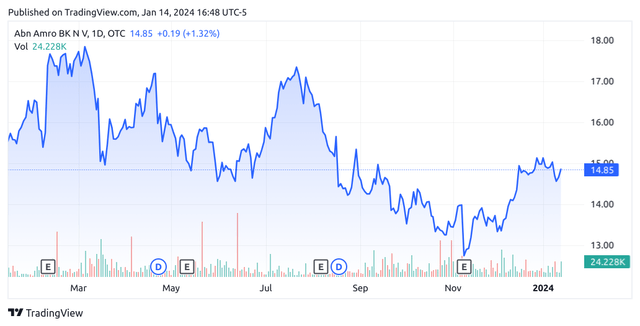Robert vt Hoenderdaal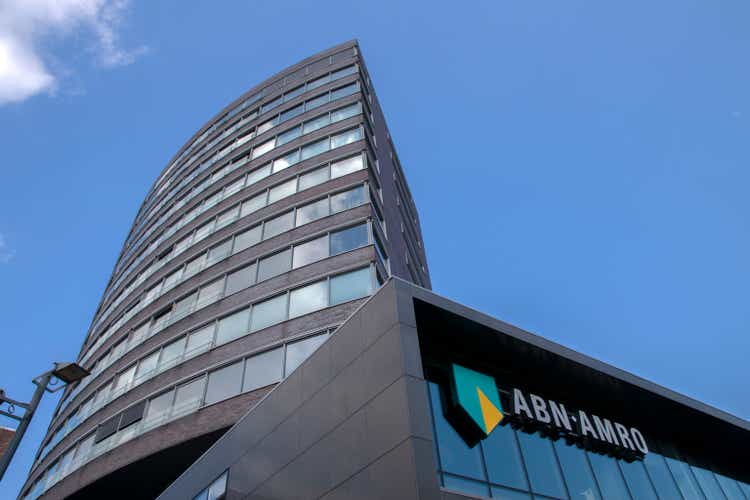
Investment Thesis: I take the view that ABN AMRO has the capacity to rebound to the $16-18 mark if we continue to see growth in residential mortgage demand and net interest margin.
In a previous article back in October, I made the argument that ABN AMRO (OTCPK:AAVMY) could see modest growth going forward on the basis of a slowdown in residential mortgage growth.
Since then, the stock has ascended to a price of $14.85 at the time of writing:
The purpose of this article is to assess whether ABN AMRO has the ability to see continued growth from here taking recent performance into consideration.
Performance
When looking at Q3 2023 earnings results for ABN AMRO as released on November 8 2023, we can see that net interest income for Q3 2023 was up by 20% as compared to that of the prior year quarter.
ABN AMRO Bank N.V: Third Quarter 2023 Quarterly Report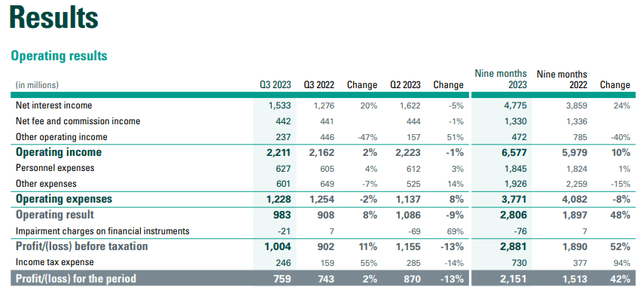
Moreover, profit saw growth of 11% before taxation – which was aided by a slight decline in operating expenses.
I had previously made the argument that a slowdown in residential mortgage growth since the end of 2022 could have been a reason behind the previous decline in stock price that was being observed at the time. With the residential mortgage segment comprising an important part of overall net interest income – performance across this sector has implications for ABN AMRO as a whole.
However, when we look at residential mortgage volumes for the most recent quarter – we see that the same has increased from that of the prior year quarter, and has rebounded to the highest level seen since Q4 2022.
Figures sourced from ABN AMRO historical quarterly reports (Q1 2020 to Q3 2023). Plot generated by author using Python’s seaborn visualisation library.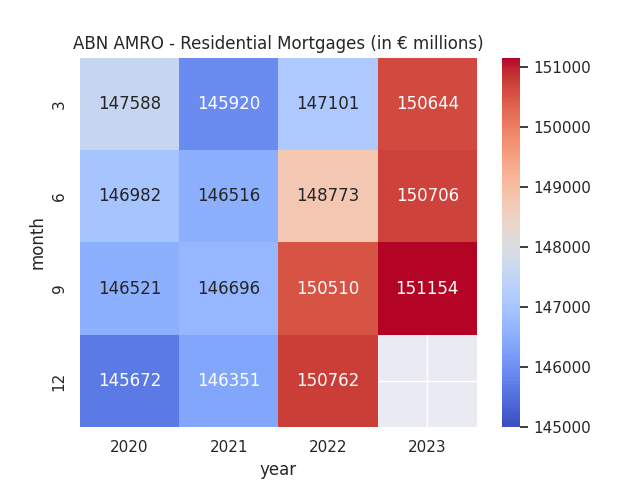
In this regard, my prior view on residential mortgage performance may have been too cautious and this segment continues to see steady growth in spite of macroeconomic pressures. For instance, ABN AMRO reports that housing prices in the Netherlands are in fact lower than the peak of 4.3% as seen in July 2022 – with prices now stabilizing faster than expected. As such, housing demand appears to remain healthy and we could see further growth across the residential mortgage segment if this trend continues.
Risks and Looking Forward
As regards my take on the above results and the implications for the growth trajectory of the stock going forward, one of the key indicators that I will be keeping an eye on when Q4 results are released next month is net interest margin.
The reason that I see this metric as being important from a longer-term standpoint is that while net interest income has been rising – there is also the possibility that higher interest rates could also spur greater deposit demand. If the amount that a bank is earning on interest on loans compared to the amount it pays on interest on deposits is decreasing – then this would be reflected in a lower net interest margin.
ABN AMRO Bank N.V.: Third Quarter 2023 Quarterly Report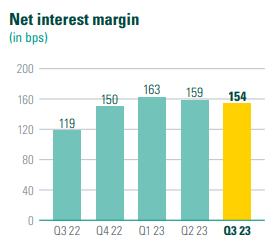
We can see that while NII saw a significant jump towards the end of 2022 – the same has seen a slight decline over the past three quarters.
However, NII still remains substantially higher than that of the prior year quarter in part due to deposit migration to higher-yielding products.
ABN AMRO Bank N.V.: Third Quarter 2023 Quarterly Report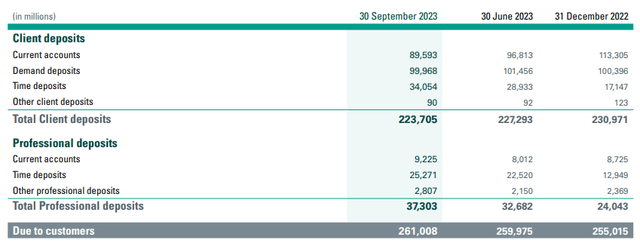
In addition, we also see that deposits due to customers has increased since December – total client deposits were down over the same period. In addition, with the European Central Bank having held interest rates at 4% last October in spite of previous hikes to combat inflation – I am cautiously optimistic that if markets increasingly anticipate a rate cut this year – then this would lead to deposit demand levelling off while concurrently spurring residential mortgage demand.
While there is a risk that NII continues a downward trajectory if this does not prove to be the case – growth for this metric is still expected to remain strong relative to the prior year quarter as a whole. However, I maintain that weakness in the residential mortgage market could still place downward pressure on the stock, which might be the case if housing demand is less buoyant than expected in spite of prices having stabilized at lower levels as compared to the 2022 peak.
I had previously made the argument that ABN AMRO could see a recovery to the $16-18 level if the residential mortgages segment sees growth over the next couple of quarters. I am optimistic that the bank can achieve this given the current trajectory.
ycharts.com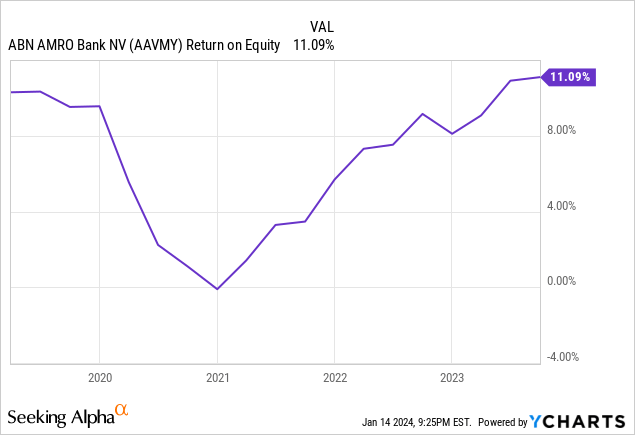
In addition, with return on equity remaining near a five-year high – further growth across this metric also has the capacity to lift the stock to the $16-18 price range.
Conclusion
To conclude, ABN AMRO has seen a recovery in price on the back of buoyant demand across residential mortgages and overall growth in net interest margin. While I rate the stock a hold at present, continuation of these trends in the upcoming quarter would prompt me to revise my rating from hold to buy.
Editor’s Note: This article discusses one or more securities that do not trade on a major U.S. exchange. Please be aware of the risks associated with these stocks.
